Two different Carpenter bee species.
We are blessed with all of the beauties in nature.
This is a male Banded Carpenter Bee (Xylocopa caffra) in the first picture. The females are black, with bands of yellow hairs. The males patrol areas in their territory, and this can be around the flowers, bushes, trees, or leaves where they live and burrow. They like to nest in holes they have bored in dead wood and stems of plants or trees, especially in the Aloes and Agave plants. An interesting fact is that some females keep a special type of mite on their abdomens. These Banded Carpenter bees are found throughout South Africa, and they especially prefer the fynbos, succulent karoo, dry savanna woodland, and coastal bush biomes.
The other type of carpenter bee, found in South Africa (not pictured in this post), is the Black-and-White Carpenter Bee. It is not found in the Western Cape. In this one, the females are black with white markings, and the males are yellow.
Source: "Field Guide to Insects of South Africa" by Mike Picker, Charles Griffiths, and Alan Weaving. Third Edition. ISBN No. 978-1-77584-584-3.
Here we have the Giant Carpenter Bee (Xylocopa flavorufa) below. They are found in the Western and Eastern Cape, and KwaZulu-Natal provinces of South Africa.
The male Banded Carpenter bee is completely covered in yellow hair.
Look how his body bends. Amazing, isn't it?
Amazing what nature can show us, and even more amazing how the insects are fully equipped to feed and to breed. So, I have written enough here about the bees, and I hope you enjoyed the pictures and the story.
Photos by Zac Smith-All Rights Reserved.
Camera: Canon PowershotSX70HS Bridge camera.
Thank you kindly for supporting this post.
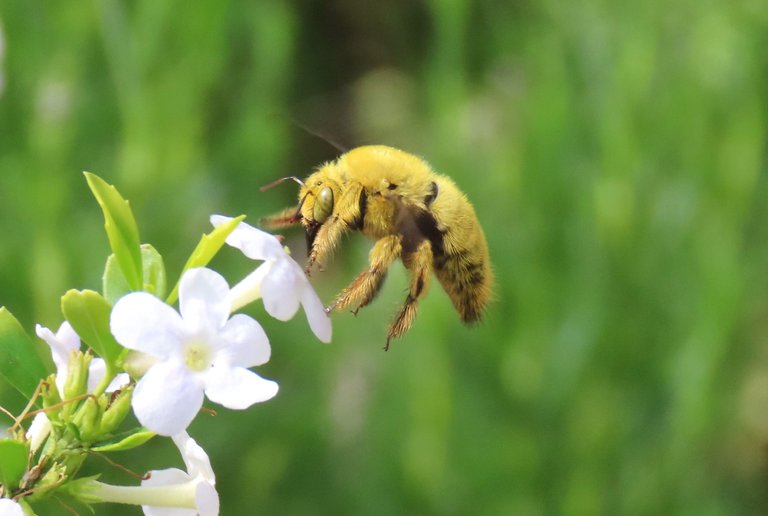
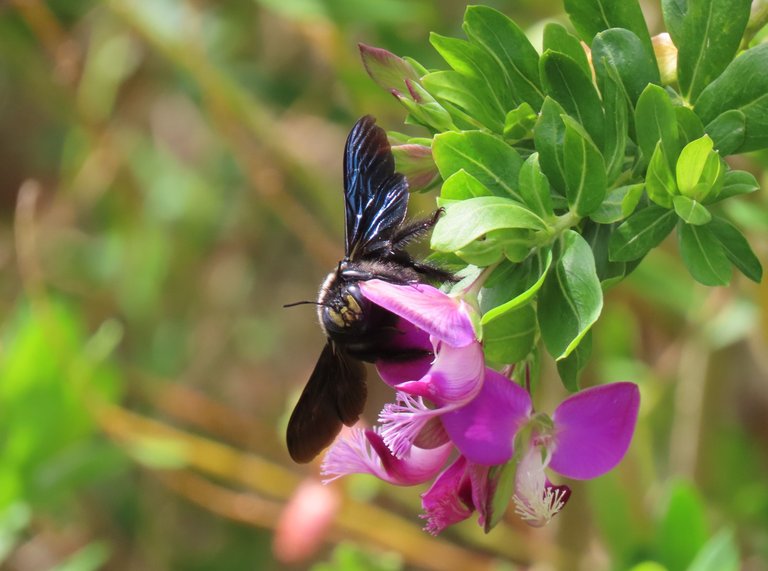
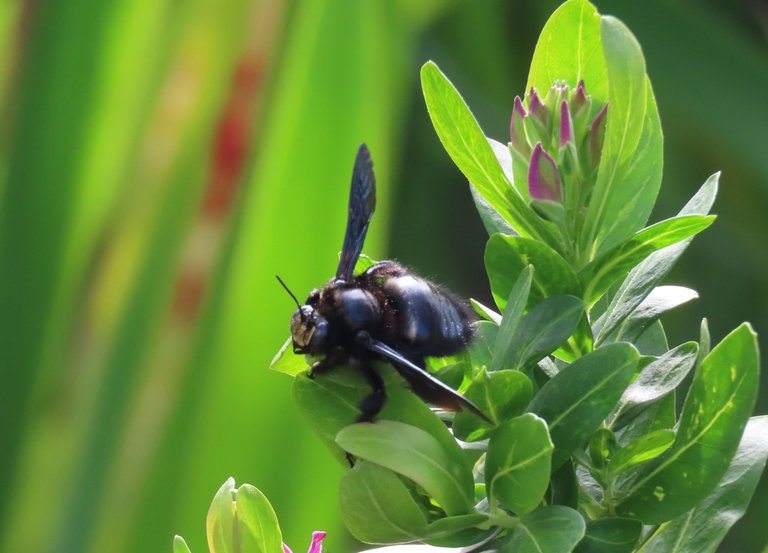
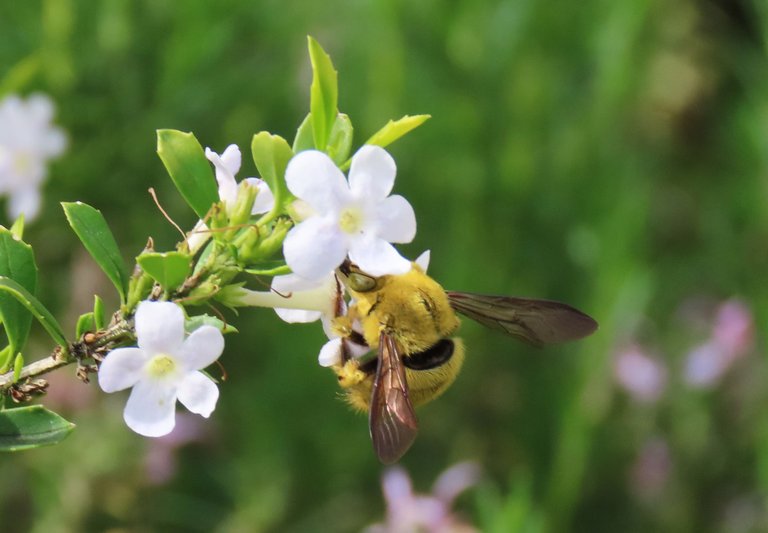

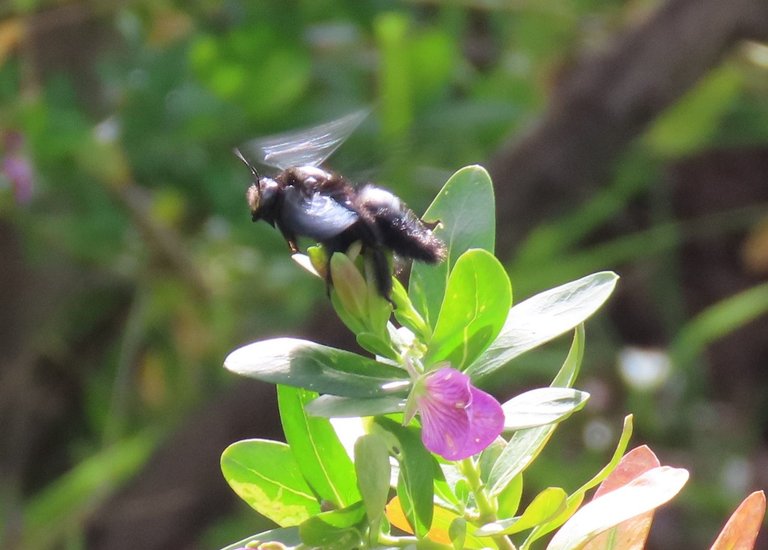
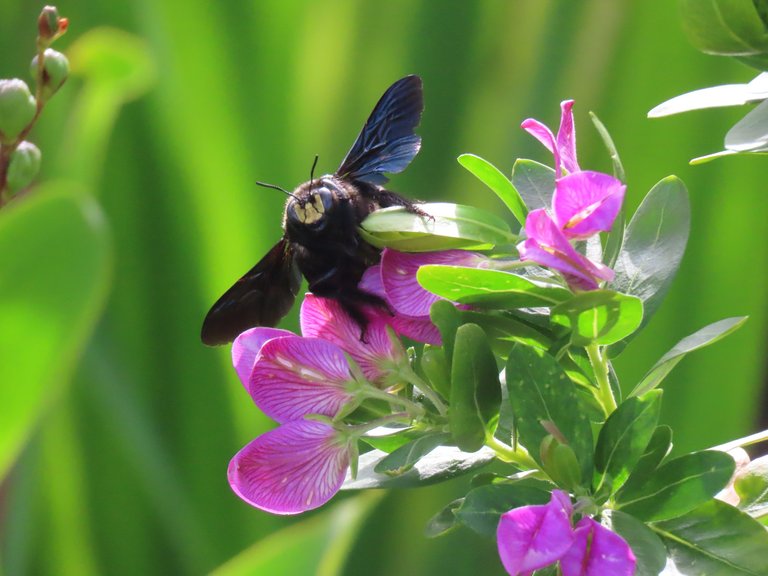
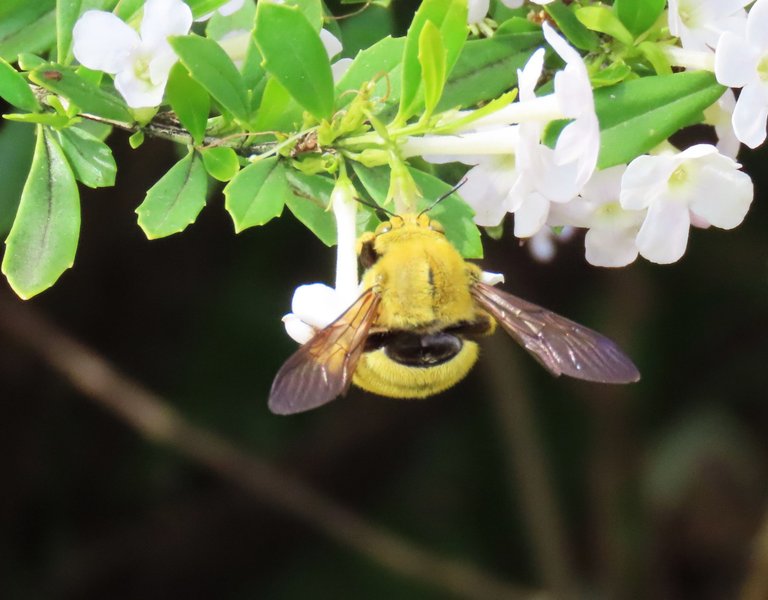
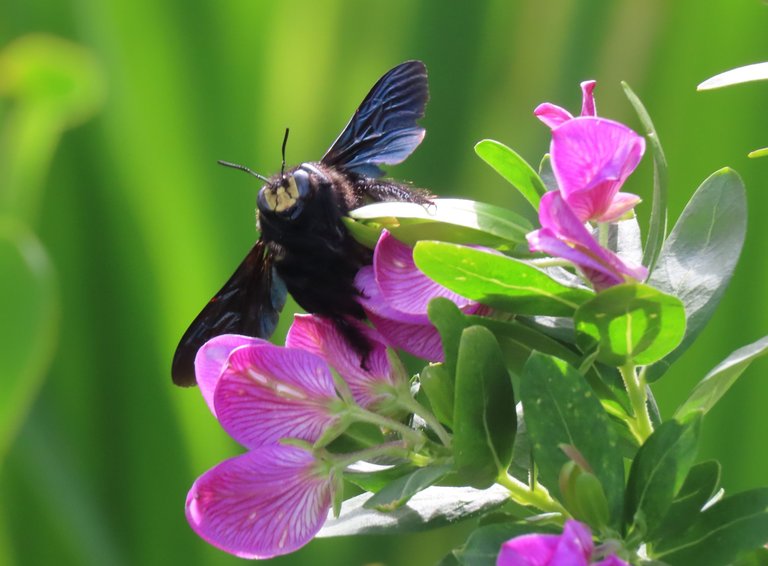
Awesoem shots of this little beauties
Cheers abd !BEER
Thank you kindly, and I am glad that you liked the shots.
!BEER
View or trade
BEER.Hey @tattoodjay, here is a little bit of
BEERfrom @papilloncharity for you. Enjoy it!Learn how to earn FREE BEER each day by staking your
BEER.View or trade
BEER.Hey @papilloncharity, here is a little bit of
BEERfrom @tattoodjay for you. Enjoy it!Did you know that <a href='https://dcity.io/cityyou can use BEER at dCity game to buy cards to rule the world.
Lovely photography! The bees look busy and happy among the flowers! I enjoyed reading the facts. Does the mite have any negative effect on the bee?
Thank you, and yes, it is called "mutualism", as both the mite and the carpenter bee benefit from this relationship. The mites are transported from nest to nest, where they eat the fungi. The female carpenter bee has a special cavity called an "acarinarium" on her abdomen, that was created specifically to transport the mites. So, it is a positive effect.
!PIZZA and !LUV
@jayna, @papilloncharity(1/10) sent you LUV. | tools | discord | community | HiveWiki | <>< daily
two very beautiful bees. I'm more interested in the yellow bee
Thank you, and glad that you liked at least one bee. !LOLZ
lolztoken.com
Because they can’t open windows in space.
Credit: reddit
@reachdreams, I sent you an $LOLZ on behalf of papilloncharity
(1/10)
NEW: Join LOLZ's Daily Earn and Burn Contest and win $LOLZ
I congratulate you, your photographs are very nice, the colors are excellent and very beautiful. In Cuba we also have several species of bees, there are some that are called bees of the earth and they are very beautiful.
Thank you for the compliment Muhammad, and I will do a search to find the "bees of the earth".
Blessings.
!PIZZZA
$PIZZA slices delivered:
@papilloncharity(2/15) tipped @jayna
Incredible photos, I love them 🥰.
Thank you kindly. !LOLZ
lolztoken.com
Par-mesean
Credit: reddit
@yanetpruna, I sent you an $LOLZ on behalf of papilloncharity
(2/10)
Farm LOLZ tokens when you Delegate Hive or Hive Tokens.
Click to delegate: 10 - 20 - 50 - 100 HP